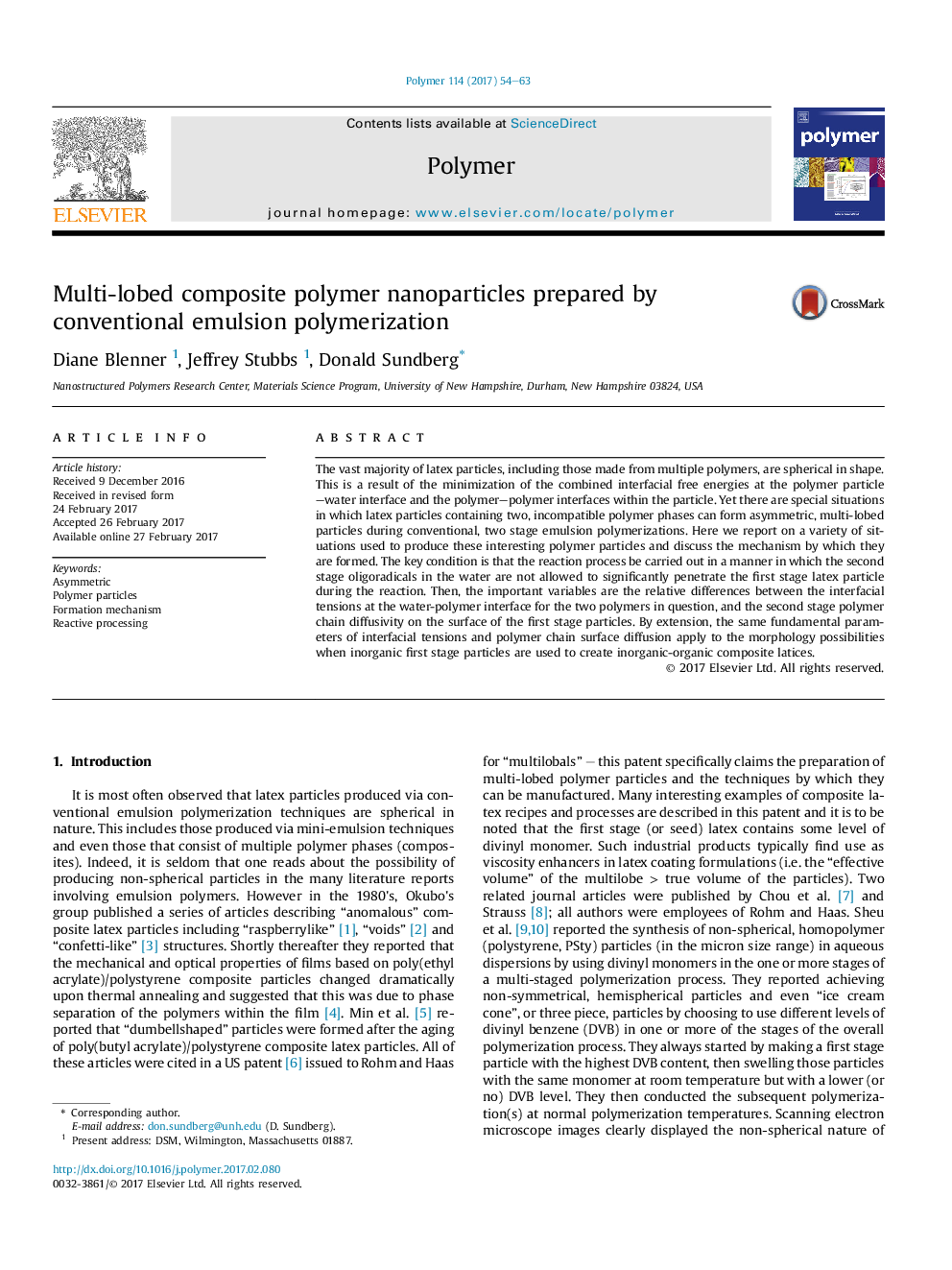| Article ID | Journal | Published Year | Pages | File Type |
|---|---|---|---|---|
| 5178261 | Polymer | 2017 | 10 Pages |
â¢Multi-lobed latex particles are easily formed in conventional emulsion polymerization.â¢Lobes form early in the polymerization reaction process.â¢Lobes are created by surface diffusion of the polymer on the first stage particle.â¢Interfacial tension differences between the two polymers drive the process.â¢2nd stage diffusion coefficients (via Tg - Treaction) restrict the process.
The vast majority of latex particles, including those made from multiple polymers, are spherical in shape. This is a result of the minimization of the combined interfacial free energies at the polymer particle-water interface and the polymer-polymer interfaces within the particle. Yet there are special situations in which latex particles containing two, incompatible polymer phases can form asymmetric, multi-lobed particles during conventional, two stage emulsion polymerizations. Here we report on a variety of situations used to produce these interesting polymer particles and discuss the mechanism by which they are formed. The key condition is that the reaction process be carried out in a manner in which the second stage oligoradicals in the water are not allowed to significantly penetrate the first stage latex particle during the reaction. Then, the important variables are the relative differences between the interfacial tensions at the water-polymer interface for the two polymers in question, and the second stage polymer chain diffusivity on the surface of the first stage particles. By extension, the same fundamental parameters of interfacial tensions and polymer chain surface diffusion apply to the morphology possibilities when inorganic first stage particles are used to create inorganic-organic composite latices.
Graphical abstractDownload high-res image (247KB)Download full-size image
